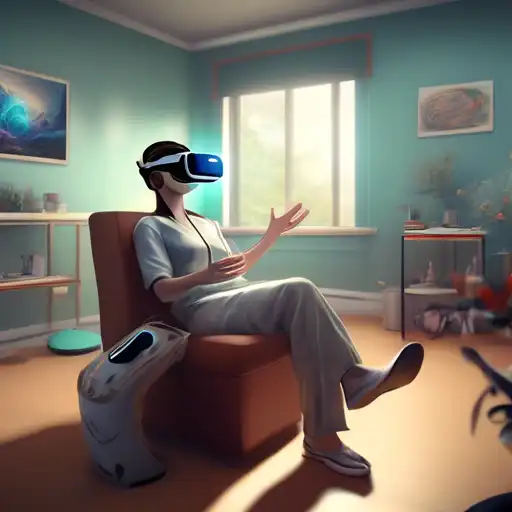The Transformative Role of Virtual Reality in Therapeutic Practices
Virtual Reality (VR) technology has transcended its initial entertainment-centric applications to become a groundbreaking tool in the field of therapy. By immersing patients in controlled, virtual environments, therapists are now able to treat a variety of psychological and physical conditions more effectively. This article explores the innovative ways VR is being utilized in therapeutic settings, offering new hope and possibilities for patients worldwide.
Understanding VR Therapy
VR therapy involves the use of virtual reality technology to simulate environments for therapeutic purposes. It's a form of exposure therapy that allows patients to confront their fears in a safe, controlled setting. From treating phobias to aiding in physical rehabilitation, VR therapy is proving to be a versatile and effective tool.
Applications of VR in Therapy
The applications of VR in therapy are vast and varied. Below are some of the most significant ways VR is making an impact:
- Mental Health Treatment: VR is being used to treat conditions such as PTSD, anxiety disorders, and phobias by exposing patients to their triggers in a controlled environment.
- Physical Rehabilitation: Patients recovering from strokes or injuries are using VR to regain motor skills through interactive games and exercises.
- Pain Management: VR has shown promise in reducing pain perception during painful procedures or chronic pain management by distracting the brain with immersive experiences.
- Social Skills Training: Individuals with autism spectrum disorder (ASD) are benefiting from VR scenarios that teach social interaction and communication skills.
Benefits of VR Therapy
VR therapy offers several advantages over traditional therapeutic methods. It provides a safe environment for exposure therapy, allows for the customization of scenarios to meet individual patient needs, and can be a more engaging and motivating form of therapy for patients. Additionally, VR therapy can be conducted remotely, making it accessible to those who may not have easy access to traditional therapy settings.
Challenges and Considerations
Despite its potential, VR therapy is not without its challenges. The cost of VR equipment and the need for specialized training for therapists can be barriers to widespread adoption. There's also the need for more research to fully understand the long-term effects and efficacy of VR therapy across different conditions.
The Future of VR in Therapy
As VR technology continues to evolve, its applications in therapy are expected to expand. With advancements in AI and machine learning, future VR therapy programs could offer even more personalized and adaptive therapeutic experiences. The potential for VR to revolutionize therapy is immense, offering new avenues for treatment that were previously unimaginable.
In conclusion, VR is transforming the landscape of therapy, providing innovative solutions to age-old problems. As technology advances and becomes more accessible, the role of VR in therapy is set to grow, offering hope and improved quality of life for countless individuals.
